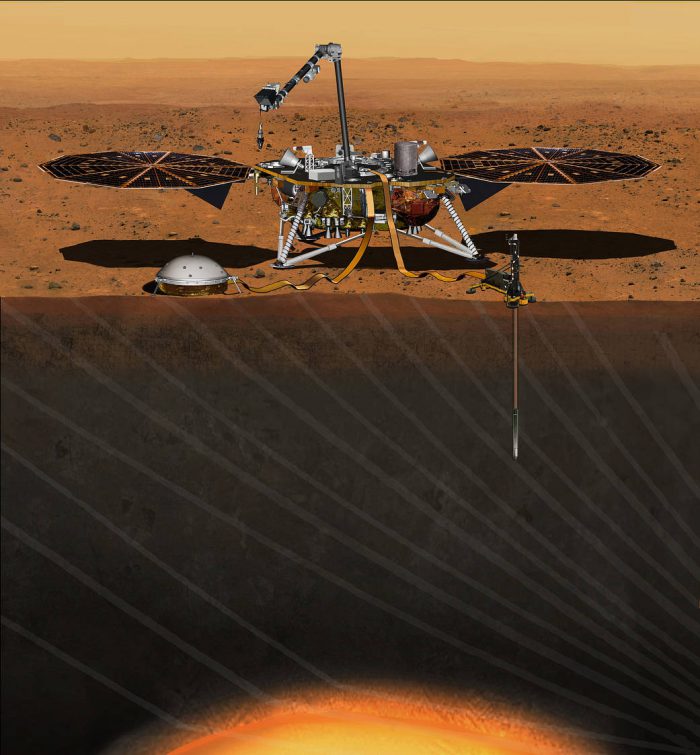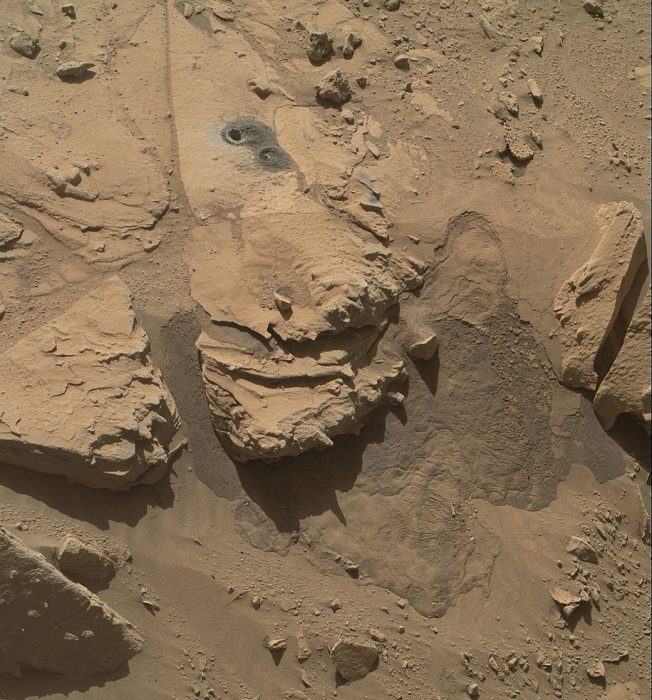Hi there! Welcome to OWLconnected's first post in partnership with Science Odyssey 2019. Over the next couple of weeks, we'll be delivering news exclusively from the worlds of science, technology, engineering, and mathematics. And, we're also hosting a terrific contest as well (you'll find the link at the bottom of the post.)
So shall we get started? Yes we shall!
Back in November, NASA's InSight Lander touched down on the surface of Mars. Unlike rovers such as Curiosity and Opportunity, it is a stationary visitor to the Red Planet and can't wander around the surface. Which is fine, because the surface is not its concern.
An ear to the ground
Instead, its job is to listen to the interior of the planet itself. InSight's job is to better understand the internal structure and activity of Mars. How does it do this? By drilling down into the crust and setting up a saucer-shaped gadget called SEIS (Seismic Experiment for Interior Structure). It's the white bubble thingy on the left in the illustration below.

An artist's illustration of the Mars InSight Lander setup on the surface. (NASA/JPL-CalTech)
Cool, right? So, uh... does it work? Well, have a listen for yourself...
While the word "likely" is key here, scientists believe that what you're hearing there is a tremor in the structure of the planet. Or, if you will, a marsquake. Yes, yes... likely marsquake. But still that's pretty darn cool!
What does it mean?
Whatcha hiding in there, Mars? (Getty Embed)
That question will take a while to answer. This signal, which was caught on April 6, is just the beginning of a much longer process. Scientists will hopefully continue to collect more and more of these sounds and use them to better answer a number of questions.
How active is the interior of the planet? (In other words, how much motion is there underground?)
What is that interior made of? (Sound travels differently through different materials.)
Are there hidden surprises that we don't yet suspect down there?
Basically, this is a brand new field of study: Martian seismology. From what we can tell on the outside, Mars isn't a very active planet. All of its volcanoes — maybe the best clue of planet with a rumbly tummy (like ours!) — are long dead. But this marsquake suggests that it's not entirely quiet down there either.
We're all full of tremors over what could be next!
Contest alert
Don't miss our Science Odyssey Family Contest. Click HERE TO ENTER.
Science Odyssey is a two-week, Canada-wide celebration of all things science, technology, engineering, and math (STEM). Find activities in your area HERE.

 What going on below the surface of Mars? We may be starting to find out thanks to InSight! (NASA/JPL-Caltech/MSSS)
What going on below the surface of Mars? We may be starting to find out thanks to InSight! (NASA/JPL-Caltech/MSSS)









